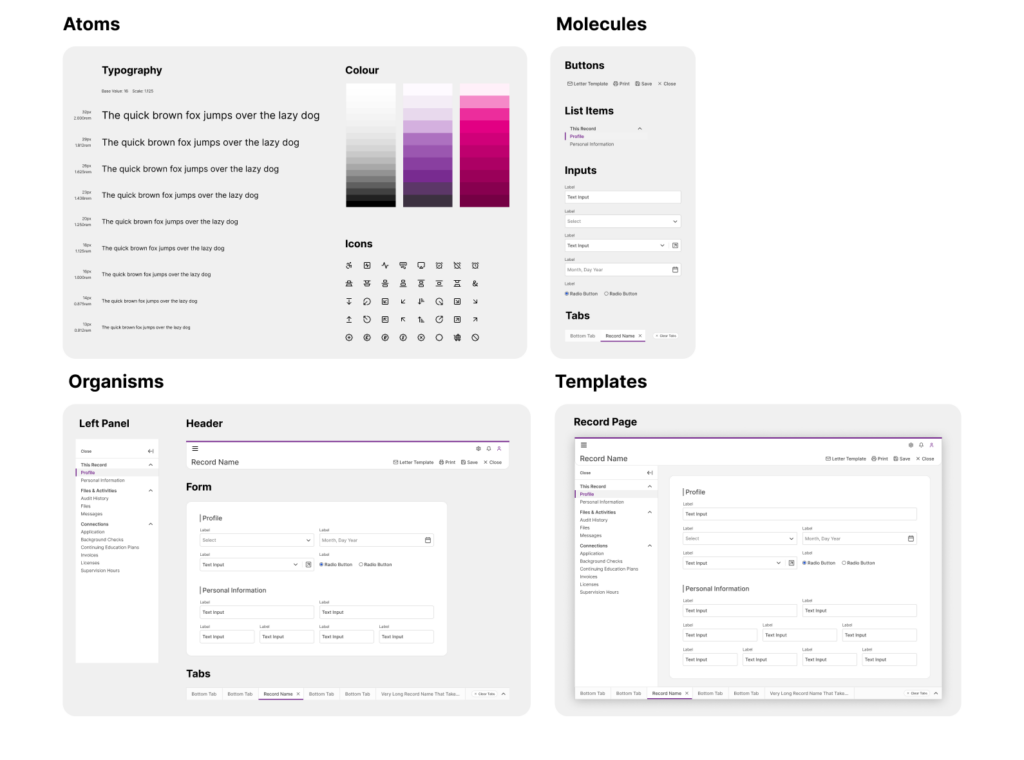

Thentia Cloud is a SAAS provider for regulation and government. Faciliting and eliminating paper processes for purposes such as applications, licensing, permitting, complaints, inpections, investigations and disciplinary action.
Create a new design system, with the goal of streamlining cross-functional collaboration and enhancing overall efficiency across design, development, and product teams.
The project began with in-depth research into Thentia’s existing design practices, challenges, and the needs of both designers and engineers.
The Cirrus design system included reusable UI components, standardized interaction patterns, and a shared visual language that would reduce redundancy, improve consistency, and foster smoother handoffs between design and development teams.
By integrating Cirrus into the product development lifecycle, we enabled faster prototyping, quicker iteration, and a unified design approach that improved both internal workflows and the user experience across Thentia’s platform.
Thentia being a cloud computing company and the cloud being a focal point of the company branding. We wanted to incorporate the analogy of cloud and atmospheric elements when creating the design system.
A good design system is modular because it allows for flexibility, scalability, and consistency across different products and platforms. By breaking down the system into reusable, independent components—such as buttons, forms, typography, and color schemes—it becomes much easier to update, maintain, and expand over time. If you need to make a change, whether it’s a visual update or a functional improvement, you can update a single component in the system, and it will automatically propagate across all instances where that component is used. This modular approach reduces duplication of effort, ensures consistency in design language, and makes collaboration between teams more efficient.
Furthermore, a modular design system enables teams to quickly adapt and respond to new product requirements or design challenges. For example, if a new feature or product is being built, designers and developers can pull from pre-defined, tested components to rapidly assemble the UI, rather than reinventing the wheel each time. This not only speeds up the design and development process but also ensures that all products stay aligned with the same user experience principles and brand guidelines. In essence, modularity in a design system fosters both creative flexibility and standardization making it a key element for any organization aiming for consistency and rapid iteration.
